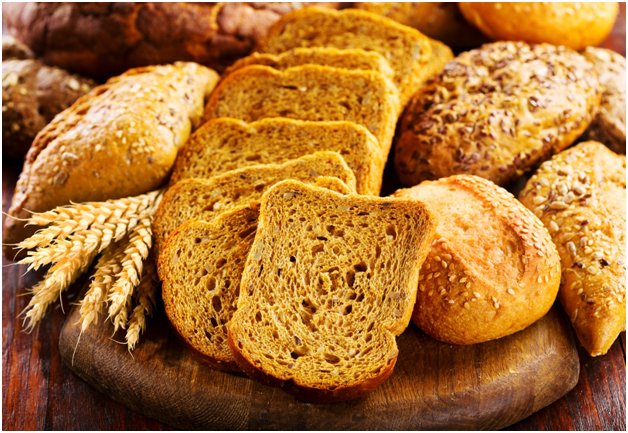Q: What’s the difference between enriched and fortified foods, and how did they get that way?
Starting in the 1920s, the federal government addressed several diseases caused by nutritional deficiencies by encouraging food manufacturers to add certain nutrients to specific foods.
The earliest example of adding something to a food product to address a public health issue was adding iodine to table salt.
In the late 1890s, between 26% and 70% of children living in the Great Lakes, Appalachian, and the Pacific Northwest regions suffered from enlarged thyroid glands due to goiter, a disease caused by iodine deficiency. Called the “Goiter Belt”, the soils of these regions contain little or no natural iodine, and livestock in these areas were also suffering from goiter.
In the 1830s a French chemist observed that goiter was less prevalent in areas in France that consumed salts that naturally contained iodine, leading to the discovery that iodine treated and prevented it. Doctors first tried giving iodine as drops given to children, but accidental overdoses created problems, but adding a small amount of iodine in the form of iodide to salt would treat and prevent goiter of both children and livestock.
In 1922 the Michigan Medical Society set up a committee to implement the addition of iodine to table salt, working with salt suppliers to create a market for this new, “iodized” version. By 1924, iodized salt became available at groceries across the state and country and over the next decade, the incidence of goiter plummeted.
Today, table salt is available in both iodized and non-iodized versions sitting side-by-side on your grocery shelf. Every box of iodized salt is can be identified by the presence of a statement “this salt contains iodide, a necessary nutrient”. Curiously, iodine is also present in today’s cow milk and dairy products due to the use of sterilizing agents containing iodine.
Cow’s milk is another food fortified to address a nutritional deficiency. In the 1930s, many children suffered from rickets, a nutritional deficiency of vitamin D that causes bones to become soft, causing leg deformities in children and broken bones in adults. Because most children drank cow’s milk, it was decided to try adding vitamin D to it. One approach was to add cod liver oil to milk, which made it taste “fishy”. Another approach was irradiating the milk, converting an inactive form of vitamin D present in the milk into its active form. Eventually, a simpler process of adding vitamin D concentrate to milk prevailed, creating today’s “fortified” milk.
In the 1930s and 1940s, nearly 7,000 people died every year in the United States from pellagra. Pellagra and another nutritional deficiency, beriberi, became rampant when new techniques in milling grains stripped off the tough outer covering of wheat, corn and rice. This process produced white rice from brown rice and resulted in a much finer wheat flour that was much preferred by bakers and consumers for making bread and other baked goods.
Those outer coverings of grains were good sources of vitamins B1 (thiamine), B2 (riboflavin), B3 (niacin) and iron, and when removed from grain during the milling process contributed to an alarming rise in nutritional deficiency diseases. Pellagra is caused by a deficiency of niacin, while beriberi is from a lack of thiamine. In 1940, there was such a high incidence of poor nutritional status among young men enlisting for service during World War II that in May 1941 President Roosevelt’s National Nutrition Conference for Defense recommended that flour and bread be enriched with vitamins B1, B2, B3 and iron. By the middle of 1942, 75% of white bread in the United States used this new “enriched” flour.
Today, most flours, cereals and cereal products, corn products, breads, noodles and macaroni/pastas are made with enriched flour. The B vitamin folic acid (folate) was added to the official description of enriched flour in 1998 due to concerns that inadequate folic acid intake during early pregnancy can cause serious birth defects like spina bifida. In 2016 the FDA approved the addition of folic acid to corn masa flour, used in tortillas, tortilla chips and tamales.
2 Important Facts About Food Fortification in the United States:
- Food fortification is not mandatory.
The Food and Drug Administration (FDA) does not require that foods be fortified. Even though the FDA has already approved adding folic acid to corn masa, each manufacturer can choose whether they actually add it to their products. Non-fortified versions of foods that are commonly fortified can be sold as long as they are not labeled as fortified or enriched.
- Fortifying food with calcium is not standardized.
Unlike like enriched flour or fortified cow milk, there is no consistency in how much calcium can be added to other foods. Extra calcium can be found in calcium-fortified orange juice and several types of milks, such as dairy, almond, and soy.


